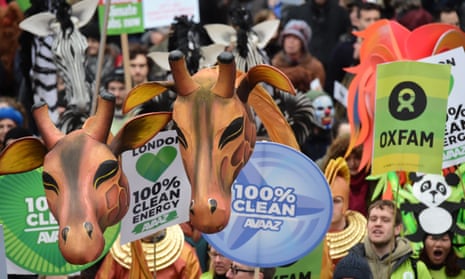With more than 190 countries gathering in Paris this week the world still has a chance to avoid dangerous global warming – but only just. Already more than 160 countries have submitted pledges to reduce or limit their emissions of greenhouse gases by 2025 or 2030. Collectively these represent a substantial improvement on “business as usual”, but they are some way from a path that offers a reasonable probability of restricting the rise in global average temperature above its pre-industrial level to no more than 2C.
There is a serious emissions gap over the next 15 years: under the current pledges, emissions will go on rising until at least 2030. Warming of about 2C creates deeply worrying risks of triggering the kind of consequences – such as rapid sea level rise or the release of methane from gas hydrates in the ocean – that could prove catastrophic, potentially causing hundreds of millions of people to move from receding coastlines and more extreme weather. That will mean more migration, more refugees, more conflict and a world without peace and prosperity. That is why the world community, via the UNFCCC, regards warming above 2C as dangerous.
In Paris countries are expected to commit themselves to more ambitious emissions cuts, but there is no room for further delay. Already we are seeing the impact of climate change growing around the world, with more heatwaves, more record rainfall events and more intense droughts. There are signs that the major land-based ice sheets on Greenland and west Antarctica may be becoming unstable. Together they hold enough water to raise global sea levels by about 13 metres. The climate warning signals are all around us.
Governments around the world now acknowledge these dangers, and have started moving to low-carbon economies. Some have made more progress than others; some are more ambitious. But the direction of travel is clear.
One of the most crucial recent developments is that countries increasingly recognise the compatibility of action to tackle climate change with efforts to overcome poverty and raise living standards. These aims are intertwined and reinforce, rather than compete, with each other.

For instance, China has vouched that it is “making efforts to embark on a sustainable development path that is in line with its national circumstances and leads to multiple wins in terms of economic development, social progress and combating climate change”. And Mexico notes that actions to cut emissions and to become more climate resilient will “not only help tackle global warming and reduce social and ecosystem vulnerability, but also promote inclusive green growth in the country”.
It is clear that many developing countries understand that the transition to the low-carbon economy will be full of innovation, investment and discovery, and will lead to strong growth – just as we have seen during past waves of technological change, from the industrial revolution through to the digital revolution today.
Most countries face huge challenges in terms of their cities, energy systems and land use. But if we respond to these challenges successfully, we can not only manage the risks of climate change but also boost prosperity and wellbeing in many other ways.
By mid-century there will be 3 billion more people living in cities – a transformation of huge importance. From the point of view of emissions and the structure of those cities, the next 20 years is of unique importance to world history. If cities are polluted, congested and inefficient, they will be terrible places to live in, and the most serious threat to managing climate change successfully.
We can already see what harm fossil fuel-generated air pollution is causing, particularly in the growing cities of India and China, where millions of people are having their lives cut short. Even in London and other European cities, air pollution is severely damaging lives and livelihoods. So designing our cities to be cleaner, less congested and more efficient will have enormous social and economic benefits, as well as reducing the risks of climate change.
Many cities will have representatives in Paris to showcase the progress they are making and to change ideas. They will help create the confidence that existing country pledges can be met and bettered.
Above all, Paris will provide a moment for political leadership: an opportunity for governments to set aside narrow interpretations of their national self-interest and instead focus on the common good. In doing so, they will invest in ways that directly advance the wellbeing of their peoples.
Together, governments must send a clear signal from Paris to the entire world that over the next 20 years we can and will start along a path that offers us, our children and future generations real hope.
The prize, still attainable, is a future more sustainable, more secure and more prosperous.
